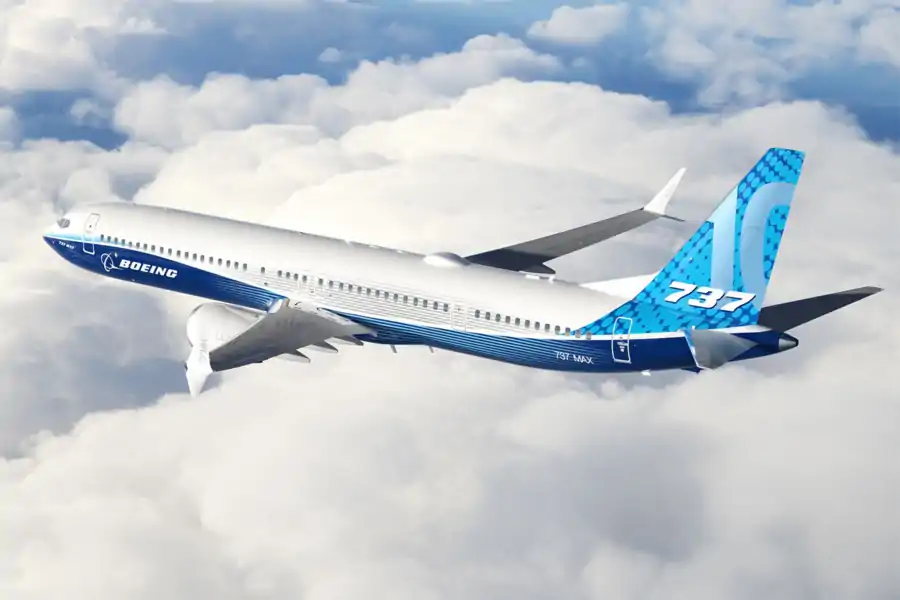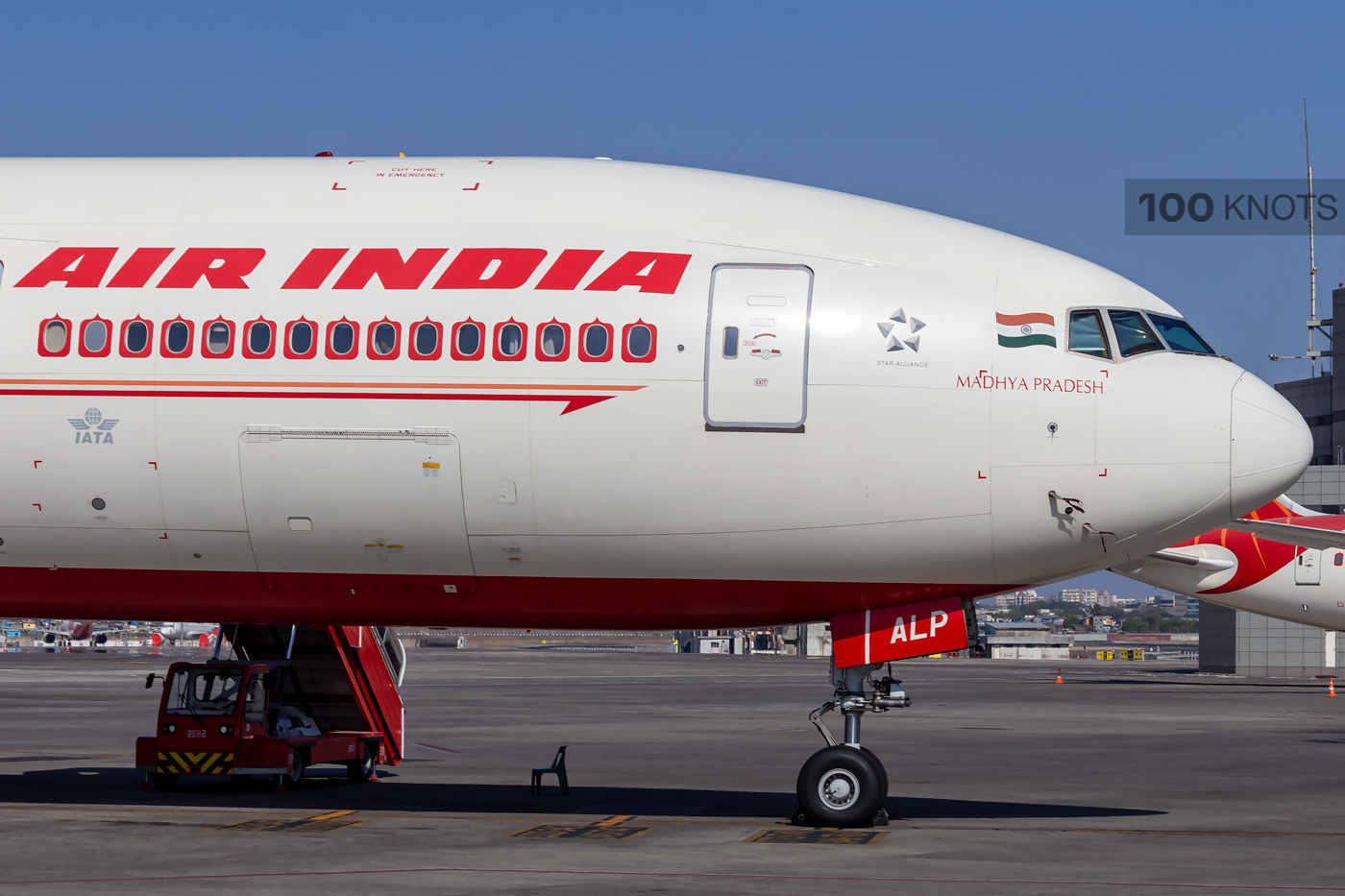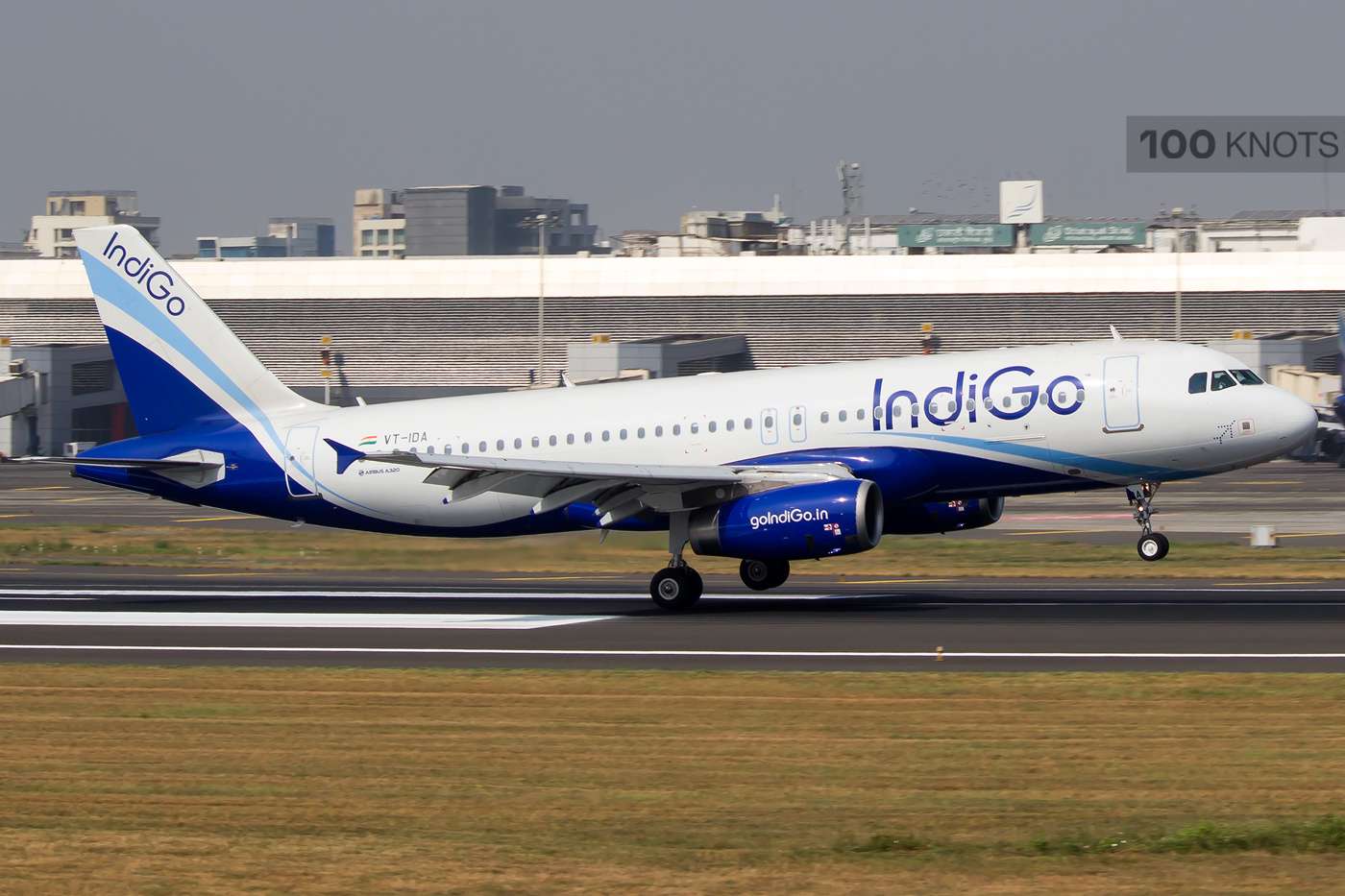Air India, the flag carrier airline of India, had been facing a multitude of challenges over the years, from mounting debts to stiff competition from private airlines. However, with the recent announcement of its plans to expand its fleet with multiple types of aircraft, Air India is poised to regain its lost glory in the aviation industry.
Air India’s agreement to acquire 470 planes from Airbus and Boeing, the largest deal in aviation history, will help the airline modernize its fleet, expand its network, and boost in its ambition to become “a world-class proposition.
Air India, recently privatized and now owned by the Tata group, will induct 210 Airbus A320/321 Neo planes, 190 Boeing 737 MAX single-aisle aircraft, 40 Airbus A350s, 20 Boeing 787s, and 10 Boeing 777-9s into its fleet.
Having sub-fleet types will make network optimisation easy for the airline. For instance, the ultra-long-haul A350-1000 will also allow the airline to launch direct flights to the West coast from Bengaluru and Mumbai which the airline currently operates with the older ex-Delta 777-200 LR.
Air India’s agreement to acquire 470 planes from Airbus and Boeing, was the largest deal in aviation history.
The Air India team was led by Air India Chief Commercial Officer Nipun Aggarwal, head of aircraft acquisition Yogesh Agarwal and Tata Sons executive Pranay Todi- all investment banking professionals and part of past marquee Tata Sons acquisitions."
"The Air India team was ruthless with negotiations. They pushed aircraft and engine makers asking the right questions even though it was their first aircraft buying negotiation experience."
Said a person involved in the process.
The Airbus order is for 210 narrow-body planes, including 120 A320 Neos and 40 A321 Neos, as well as 40 wide-body A350-1000 and A350-900 aircraft.
The Boeing order includes 190 737 Max aircraft, 20 787-900s and 10 777s with an option to buy an additional 50 737 Max planes and 20 787s. The aircraft will be delivered over eight to 10 years.
The new aircraft will be used to replace the current fleet of 27 787-8s, and 13 777-300 ERs which have been used for the last nine and 13 years.
The 400 narrow-body A320, A321 and 737 Max on the other hand will be used to increase the group’s market share on the domestic routes where it intends to be a close second to current market leader IndiGo.
While 50 Boeing 737 Max will be delivered within 18 months, the A320Neo will start only in 2026. Altogether, Tata Group airlines have a fleet of 220 aircraft, compared with IndiGo which has an active fleet of 308 aircraft and will grow to almost 400 aircraft by then.“
To close the gap with IndiGo, it is necessary to have a substantial aircraft delivery pipeline. Airbus A320 Neos were not available before 2026 while Boeing was ready to supply immediately,” the person quoted above said.
Multiple Aircraft Types, Benefits Air India.
Here are some ways in which multiple types of aircraft will help Air India achieve its goals: Improved connectivity: By adding multiple types of aircraft to its fleet, Air India can expand its reach and connect more cities in India and around the world.
Cost savings: By using different types of aircraft for different routes, Air India can optimize its fleet utilization and reduce operational costs. For example, regional jets are more fuel-efficient and have lower operating costs than larger aircraft. Similarly, wide-body aircraft can carry more passengers and cargo, thereby reducing the cost per seat.
Also read - From A350s to B777Xs, Air India finalizes the Historic 470 Aircraft deal with Airbus & Boeing
Enhanced passenger experience: Air India can cater to the diverse needs of its passengers by using multiple types of aircraft. Air India can provide a personalized and comfortable flying experience to its passengers. Improved safety and reliability: By diversifying its fleet, Air India can minimize the risk of disruption due to maintenance issues or unforeseen circumstances.
Competitive advantage: Air India's decision to add multiple types of aircraft to its fleet will give it a competitive edge over other airlines in the region. By offering a wider range of aircraft, the airline can serve more destinations and attract a diverse range of customers.
Air India's decision to add multiple types of aircraft to its fleet will give it a competitive edge over other airlines in the region.
This will help Air India to stand out in a crowded market and improve its market share. In conclusion, Air India's decision to add multiple types of aircraft to its fleet is a strategic move that will help the airline to achieve its goals of expanding its reach, improving its passenger experience, and reducing costs.
By diversifying its fleet, Air India can also improve its safety and reliability, and gain a competitive advantage over other airlines in the region.
(With Inputs from The Economic Times)
Read next
HAL to manufacture Obstacle Avoidance Systems with HENSOLDT for Indian helicopters
Radhika Bansal
16 Feb 2023
German defence firm HENSOLDT is set to share the full range of critical technologies with state-run aerospace major Hindustan Aeronautics Ltd (HAL) for manufacturing Obstacle Avoidance Systems (OAS) for Indian helicopters.
The OAS is a key piece of equipment that helps in improving the situational awareness of pilots and thereby reduces the possibility of accidents, besides enhancing mission accomplishments, according to aviation experts. The HAL is looking at production of OAS for the Advanced Light Helicopters (ALH), officials said. The indigenously designed and developed ALH is a twin engine, multi-role, multi-mission new generation helicopter in the 5.5 tonne weight class. The HENSOLDT and HAL made the announcement on the collaboration covering design and IPR (Intellectual property Rights) for manufacturing of the Obstacle Avoidance System for Indian helicopters and for potential future exports on the sidelines of Aero India 2023, the German company said. HAL and HENSOLDT also announced a collaboration for joint production of multi-sensor airborne electro-optic gimbals for Indian rotary and unmanned platforms. Officials said HENSOLDT will transfer to HAL 100 per cent critical technologies for the OAS. Helicopter accidents during low level flights have been a matter of concern for both civil and military choppers and pilot assistance through enhanced situational awareness is required for quick reaction, the company said. Obstacles in the flight path or close to it often pose a threat to helicopters. Such obstacles may be power lines, aerial cableways, pylons and towers. The probability of occurrence of such threats increases during low-level flight manoeuvres. HENSOLDT said its system provides smart visual cues to pilots to reduce their workload and thereby increasing flight safety and the certainty of mission effectiveness, particularly in crucial mission phases under adverse visual conditions. Where human eyesight alone is not enough, powerful software processes and combines information from sensors and databases and presents it in visual format, it said. "This collaboration between HAL Korwa and HENSOLDT is first of its kind in Indian Defence Industry with intention of transferring of critical key technology from Germany to India giving boost to 'Atma Nirbhar Bharat' (self-reliant India) in the Indian defence sector," said Apurba Roy, Executive Director of HAL (Korwa facility). "The finalisation of the transfer of technologies including IPR for the equipment is primarily proposed for Advanced Light Helicopters (ALH) and expected to be a major equipment fit in all future upgrade/new helicopter programmes with enhanced features with suitable improvement customisation by HAL Korwa," he said. Andleeb Shadman, MD, HENSOLDT India, said the company is optimistic and dedicated to supporting India's initiative on becoming self-reliant in defence manufacturing. "Our business plans are built on transfer of technology, local production and joint development based industrial collaborations. We believe that our collaboration with HAL for OAS is going to be the pioneering milestone," he said.
Read next
Boeing has submitted details to the Indian Navy for an assessment of the Super Hornets fighter aircraft produced by the company, a senior official of the firm has said. Boeing Defense, Space and Security, India business development head, Alain Garcia told PTI the company has handed over the details and the Indian Navy is also interested in acquiring six more P-8 patrol aircraft.
"Right now, we have submitted all of the information to the Indian Navy, for them to make an assessment. We are just ready and waiting for them to make a decision and an announcement to tell us where that stands," Garcia said at the ongoing Aero India-2023.
ALSO READ - Boeing calls F/A-18 Super Hornet “the best deck-based aircraft” for the Indian Navy
Regarding P-8 aircraft, Garcia said it has been a great platform for the Indian Navy. "They have flown the (P-8) aircraft many hours over the years to a point where it's really benefiting their capability and maritime surveillance in patrol and anti-submarine capabilities," he added.
Indian Navy expresses interest in Boeing F-18 Super Hornet fighter jets
Garcia said along with P-8 aircraft, Boeing can also help with some more Apache helicopters. He pointed out that the Indian Army has acquired six Apaches, and it is waiting for the first six to be delivered. "That first one just rolled out of our assembly production line. We build all the Apache fuselages here in India in Hyderabad with a joint venture with Tata called Tata Boeing Aerospace Limited (TBAL)," the Boeing official added.
Regarding the call for a 'self-reliant India', Garcia said there are a lot of avenues for it. Boeing has the largest facility outside the United States in Bengaluru with over 4,000 engineers, according to him. Apart from Bengaluru, the aviation company has 5,000 more employees in other parts of India. "We are growing our footprint here even more and helping the Indian aerospace industry grow," Garcia said.
Read next
Shobha Gangwal, the wife of IndiGo co-promoter Rakesh Gangwal, will sell shares amounting to a four percent stake in the aviation company via a block deal, CNBC TV-18 reported on February 15, citing sources.
The block deal, as per the report, has been launched for 1.56 crore shares. The total deal size is of Rs 2,930 crore, the source who are privy to the development said.
The maximum discount will be up to 5.6 percent of the current market price, the sources added, further noting that the floor price has been set at Rs 1,875 per share.
Goldman Sachs is the banker assigned to broker the block deal, CNBC TV-18 reported. There will be a 150-day lock-up period post-block deal for the investors, it added.
IndiGo's promoter and promoter group presently hold a total of 71.92 percent stake or 27.72 crore shares in the company, as per the shareholding pattern disclosed with the BSE.
Rakesh Gangwal, along with Rahul Bhatia, had co-founded IndiGo airlines in 2006. In February last year, Gangwal resigned from the board of directors, and had announced that he would gradually reduce his stake in the company.
In September, Gangwal and his wife had offloaded a 2.74 percent stake in InterGlobe Aviation, the parent firm of IndiGo, for Rs 2,005 crore through open market transactions.
The shares of Interglobe Aviation settled at Rs 1,986 apiece at the market closing hours of February 15. The closing price was 2.5 percent lower as against the previous day's close.
The block deal comes days after the company reported a 1,000 percent surge in net profit during the third quarter of fiscal year 2022-23.
The airline's profit came in at Rs 1,422.6 crore in Q3 FY23 as against a profit of Rs 129.8 crore in the year-ago period. Revenue from operations surged 61 percent to Rs 14,932 crore in the third quarter as against Rs 9,294 crore a year ago.
Read next
Ministry of Civil Aviation identifies 25 airports for the second phase of privatisation
Radhika Bansal
15 Feb 2023
In a major development in the aviation sector, the Ministry of Civil Aviation has identified as many as 25 airports for the second phase of airport privatisation. The ministry is currently finalising the terms and conditions for the bidding process. The 25 airports identified for privatisation include some big ones like Chennai, Varanasi, and Kolkata.
The aviation ministry is planning to adopt a new formula for the Public-Private Partnership (PPP) model in the second phase. Under this plan, one big airport could be with one smaller airport and then floated for bidding as one single unit, sources told ET NOW. For example, the Varanasi Airport could be clubbed with Kushinagar Airport. Chennai Airport could be clubbed with a nearby smaller airport.
Using this technique, the government is hoping to attract more private players for the bidding process. In addition to this, Centra also hopes that it will be able to receive more than Rs 10,000 crore as an upfront payment. The bidding formula will be the same as it was during phase 1 of airport privatisation i.e. per passenger fees or the revenue.
The process for the second phase of airport privatisation is on and it is likely that the entire project and the Cabinet note will be ready within two months, which will soon be floated for Cabinet approval.
Last year in December, Civil aviation minister Jyotiraditya Scindia said that the government is looking to lease out 11 more airports for 50 years. The minister shed light on the status of the airport privatisation plan.
“Our plan is to lease out the assets for a period and gain cash flow, which will then be reinvested to build out more airports in tier 2 and tier 3 cities. Our plan is to lease out another 11 airports. So, that process is on and shortly you will be hearing about that,” he had said.
In 2019, the government had leased 6 airports - Lucknow, Ahmedabad, Mangalore, Jaipur, Guwahati and Thiruvananthapuram – and industrialist Gautam Adani-led Adani Group won the bid for all six airports.
(With Inputs from ET Now)
Read next
Tata Boeing Aerospace Limited ships the first vertical fin structure for B737
Radhika Bansal
15 Feb 2023

Tata Boeing Aerospace Limited (TBAL) on Tuesday, February 14 said it has shipped the first vertical fin structure for the Boeing 737 aircraft from its state-of-the-art facility in Hyderabad.
The vertical fin will be delivered to the Boeing manufacturing facility in Renton, WA, for integration into the final Boeing 737 aircraft, a Tata Advanced Systems Limited (TASL) statement said.
Tata Boeing Aerospace Limited ships the first vertical fin structure for B737
In 2021, TBAL added a new production line to manufacture vertical fin structures for the 737 family of airplanes. The expansion marked a significant milestone for the joint venture. It also created additional employment while enabling skill development.
"Tata Boeing Aerospace Limited is an example of Boeing's commitment towards the co-development of integrated systems in aerospace and defence in India for the world, and a reflection of the country's Aatmanirbhar Bharat capabilities. The speed and quality with which the first vertical fin has been manufactured is a testament to TBAL's skilled workforce, engineering talent, and world-class manufacturing prowess."
Salil Gupte, President, Boeing India
A vertical fin is a vertical stabilising surface mounted on the tail of an aircraft, providing stability and control in yaw, or the movement of the aircraft from side to side, preventing side-slip and maintaining a straight and level flight. The new production line utilizes cutting-edge robotics, automation, and advanced aerospace concepts like full-scale determinant assembly in its manufacturing processes.
“Successful shipment of the first vertical fin structure for the Boeing 737 aircraft is a result of the hard work and seamless collaboration by the teams at TBAL. This positions TBAL and India as an important manufacturing base in overall Boeing operations. We stay committed towards progression of indigenous aerospace manufacturing with a strong focus on quality and timely delivery.”
Sukaran Singh, Managing Director and Chief Executive Officer, Tata Advanced Systems Limited (TASL)
Spread over 14,000 square meters, the joint venture between Boeing and Tata Advanced Systems Limited (TASL) employs over 900 engineers and technicians. It has been producing aero-structures for Boeing’s AH-64 Apache helicopter, including fuselages, secondary structures, and vertical spar boxes for customers worldwide. Earlier this year, TBAL also delivered the first fuselage for the first of the six Indian Army AH-64 Apache attack helicopters on order.
ALSO READ - Boeing receives the 200th CH-47 crown & tail cone from Tata Advanced Systems




Comment